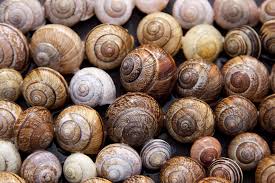Stamp: Oysters and pearls (Bahrain 1924)
Oysters and pearls (Bahrain 1924)
01 January (Bahrain ) within release Revenue goes into circulation Stamp Oysters and pearls face value 5 Indian rupee
Stamp is square format.
Revenue Reverend cat. no: R4aAlso in the issue Revenue:
- Stamp - Camels face value 50;
- Stamp - Camels face value 50;
- Stamp - Donkey transport face value 10;
- Stamp - Donkey transport face value 10;
- Stamp - Falconry face value 1;
- Stamp - Falconry face value 1;
- Stamp - Harbour face value 8;
- Stamp - Harbour face value 8;
- Stamp - Merchants face value 4;
- Stamp - Merchants face value 4;
- Stamp - Oasis face value 100;
- Stamp - Oasis face value 100;
- Stamp - Oysters and pearls face value 5;
- Stamp - Oysters and pearls face value 5;
|
Data entry completed
56%
|
|
|---|---|
| Stamp Oysters and pearls in digits | |
| Country: | Bahrain |
| Date: | 1924-01-01 |
| Print: | Collotype |
| Perforation: | 9½ |
| Emission: | Revenue |
| Format: | Stamp |
| Face Value: | 5 Indian rupee |
Stamp Oysters and pearls it reflects the thematic directions:
personal ornaments, such as necklaces, rings, or bracelets, that are typically made from or contain jewels and precious metal.Marine life, or sea life or ocean life, refers to the plants, animals and other organisms that live in the salt water of the sea or ocean, or the brackish water of coastal estuaries. At a fundamental level, marine life helps determine the very nature of our planet. Marine organisms produce much of the oxygen we breathe. Shorelines are in part shaped and protected by marine life, and some marine organisms even help create new land. Altogether there are 230,000 documented marine species, including over 16,000 species of fish, and it has been estimated that nearly two million marine species are yet to be documented. Marine species range in size from the microscopic, including plankton and phytoplankton which can be as small as 0.02 micrometres, to huge cetaceans (whales, dolphins and porpoises) which in the case of the blue whale reach up to 33 metres (109 feet) in length, being the largest known animal.
A seashell or sea shell, also known simply as a shell, is a hard, protective outer layer created by an animal that lives in the sea. The shell is part of the body of the animal. Empty seashells are often found washed up on beaches by beachcombers. The shells are empty because the animal has died and the soft parts have been eaten by another animal or have rotted out. The term seashell usually refers to the exoskeleton of an invertebrate (an animal without a backbone). Most shells that are found on beaches are the shells of marine mollusks, partly because many of these shells endure better than other seashells.



